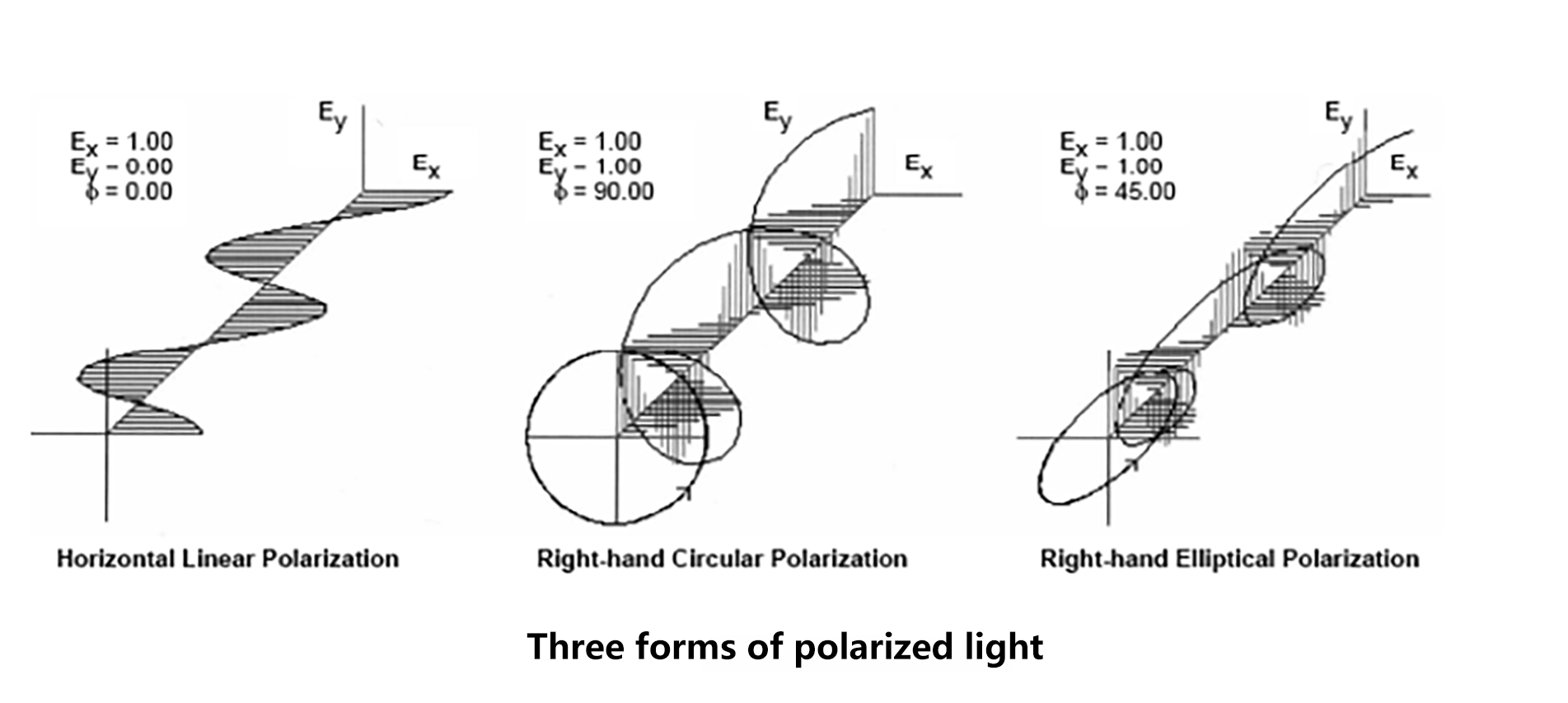How to understand polarized light and extinction ratio?
How to understand polarized light and extinction ratio?
The term polarization of light refers to the bias in the distribution of its energy as it travels. Light is a transverse wave whose energy is distributed in the cross-section of the direction of propagation, and how the energy is distributed is what polarization describes. For fully polarized light, the distribution of energy in this plane is definite and has a fixed direction, whereas natural light has no direction in its energy distribution and is completely random. The vast majority of the light we see every day falls between these two states, and its energy distribution is both somewhat random and somewhat biased.
There are three common forms of light polarization:
Horizontal Linear Polarization;Right-hand Circular Polarization;Right-hand Elliptical Polarization;
The polarization extinction ratio is the proportionality between two orthogonal polarization components decomposed along the direction of the main state of polarization, and the unit is dB. 100:1 means 20dB, 10000:1 means 40dB. For a polarizer, the higher the extinction ratio, the stronger the ability to change the input light into linearly polarized light. For a light source, the higher the extinction ratio, the closer the output light will be to linearly polarized light. Theoretically, the energy of linearly polarized light is completely concentrated in one direction, and the extinction ratio is infinite; the energy of circularly polarized light is evenly distributed in two orthogonal directions, and the extinction ratio is 0; for elliptically polarized light, the extinction ratio is between 0 and infinity; and because of the equal energy in all axes, the extinction ratio of non-polarized light is 0. In fact, the extinction ratio of 40dB is already quite high, and the extinction ratio of low-polarized light is generally less than 0.5dB.



